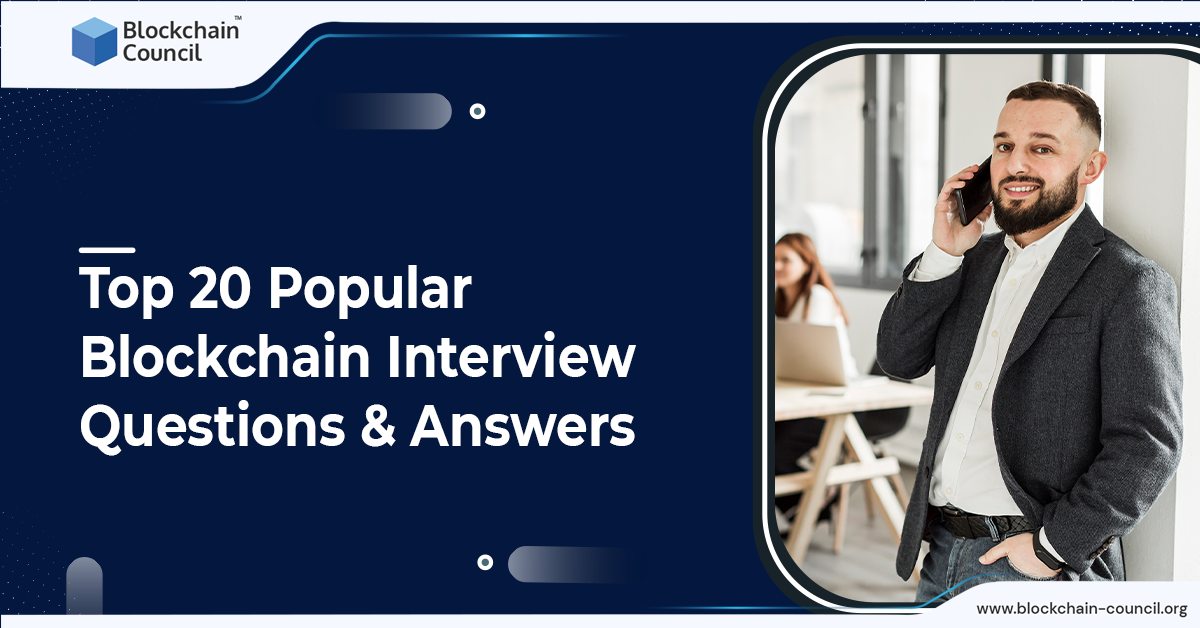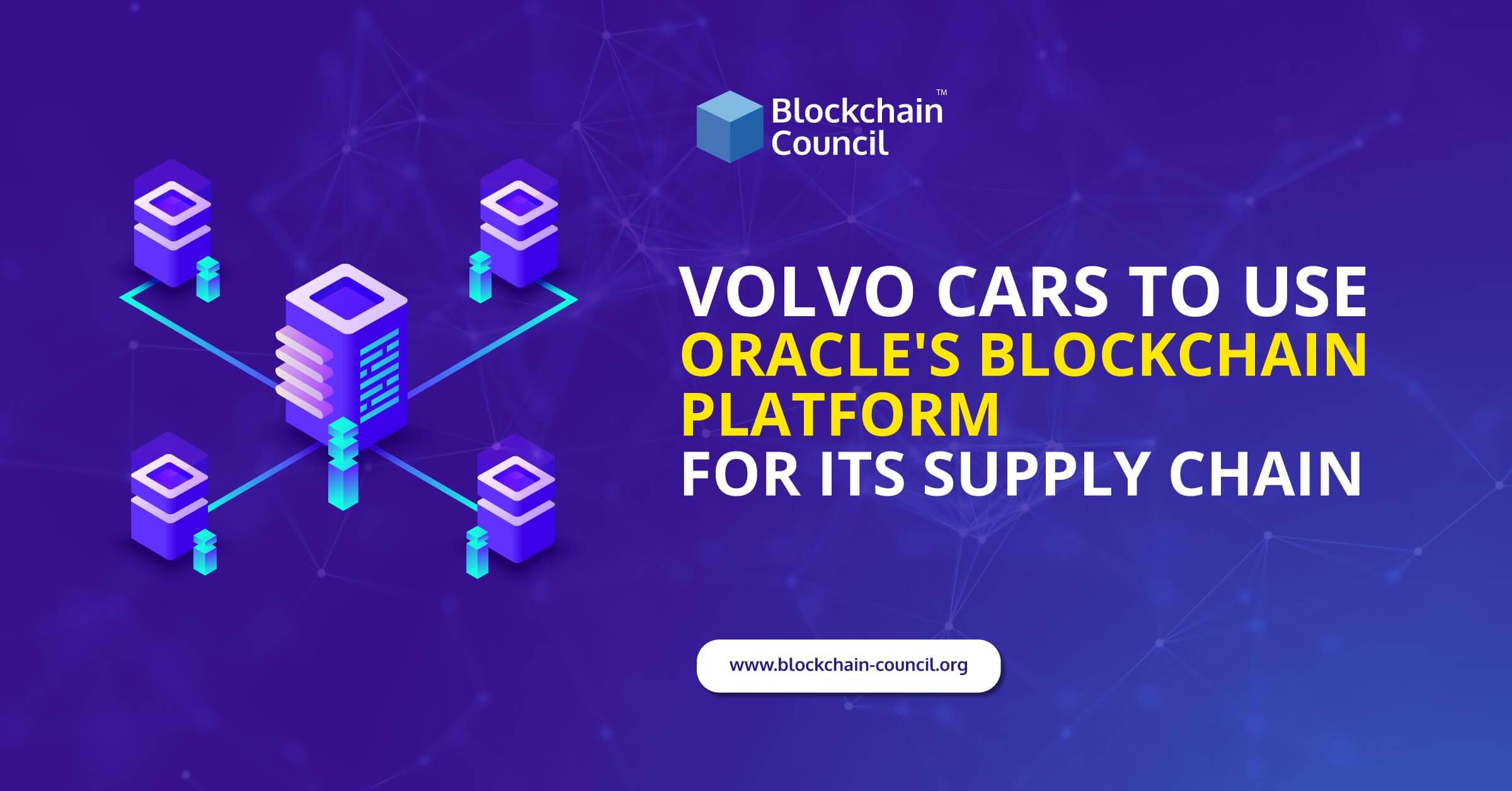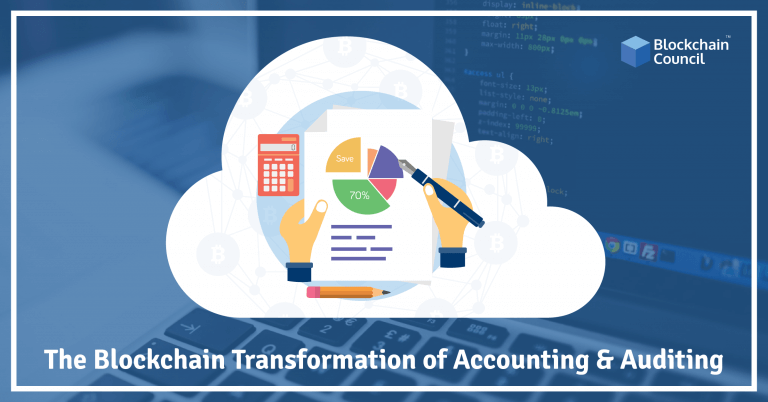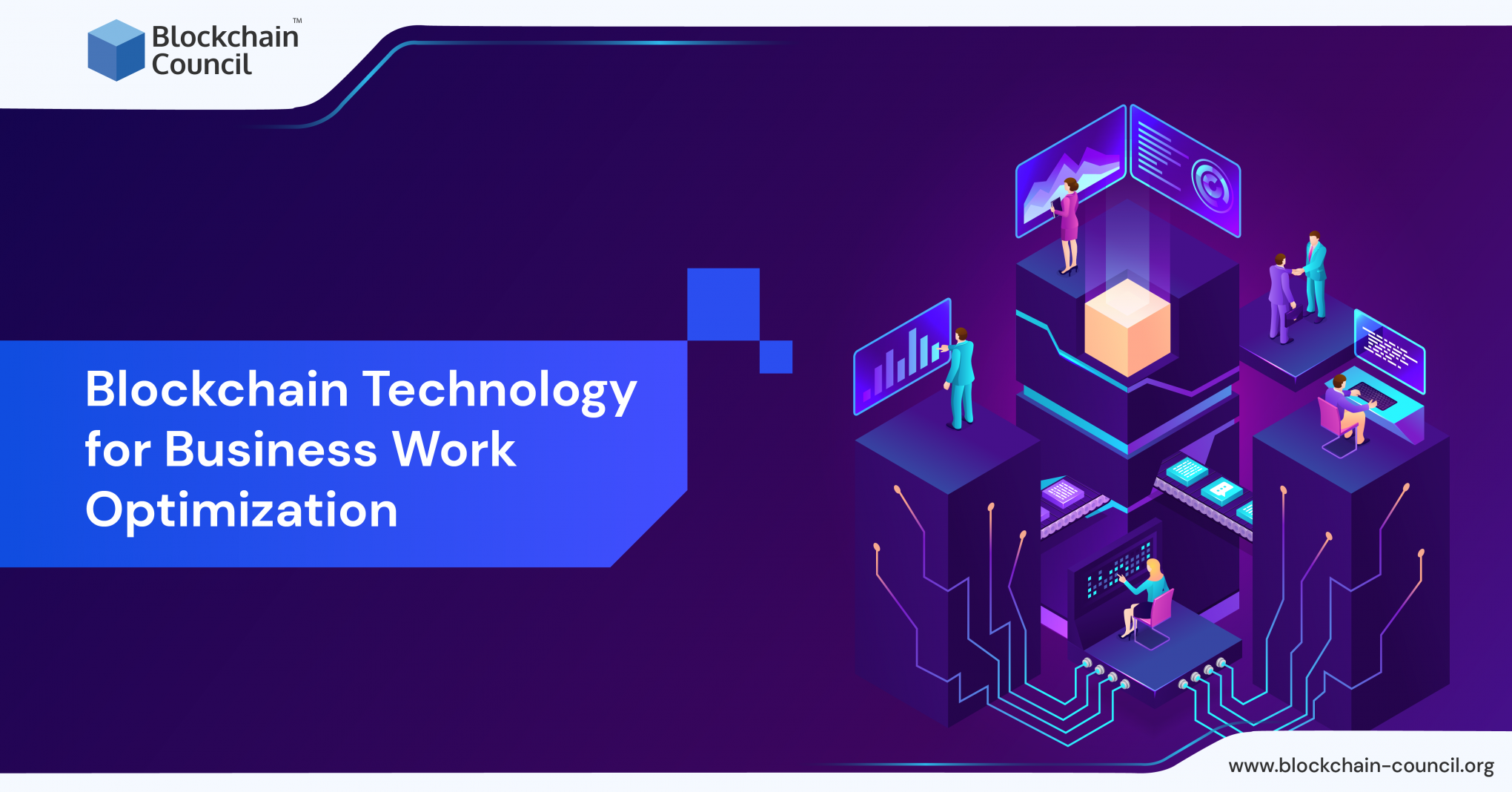
- Toshendra Kumar Sharma
- February 12, 2024
The term “blockchain technology” has become a hot topic in the IT world. What began as a process of gradual improvement has now evolved into a radical change. For the sake of this post, we’ve compiled a list of the twenty most often asked questions and responses to aspiring candidates for the position of blockchain expert in interviews. These blockchain interview questions and answers can help you ace your next round of interviews.
20 Common Questions That You Should Prepare For Blockchain Expert Interview
1. What is the definition of Blockchain?
Using a blockchain platform, you may create a tamper-free and corruption-free digital ledger. A blockchain technology is a growing set of cryptographically connected data known as blocks (the study of techniques for secure communication). Basically, it is an effective and reliable method of recording transactions between two parties. Moreover, a blockchain network does not have a centralized authority. But, a peer-to-peer network, a cluster of computers manages a time-stamped succession of immutable (tamper-proof) data.
2. What makes a blockchain reliable?
The way of keeping and handling data is what makes blockchain trustworthy. Here, the technology employs cryptographic consensus procedures to guard against malicious third parties accessing the information. Unlike other digital storage methods, material recorded on a blockchain is permanently accessible. Furthermore, a blockchain’s immutability enhances trustworthiness as well.
3. Name the few fundamental blockchain principles that ensure your safety.
- P2P transmission
- Distributed database
- Transparency
- Computational logic
- Immutable records
4. What is the meaning of the term “blocks” used in blockchain technology?
A block keeps the transaction data permanently in a block on a blockchain. Basically, blocks are record books that have a predetermined size. Further, they produce new blocks once the new transactions begin in a chronological order. In fact, you can find connections between these blocks through hash which creates a chain. However, unlike a public blockchain, in a permissioned blockchain platform only the sender and recipient may access the encrypted information in blocks.
5. State about Merle Trees and blockchain’s importance.
A Merkle tree, also known as a hash tree, is a cryptographic data structure in which each leaf node represents a block’s hash. Further, a non-leaf node shows its child nodes hashes. Instead of downloading every transaction and block, a blockchain’s “light client” can merely download the chain of block headers when a Merkle tree is present. Furthermore, you can download a branch of the tree containing the transactions in order to validate their presence.
6. What types of data can one store in a blockchain?
Blockchain enables businesses to keep any form of document on the blockchain. For example, identity management, transactions in the workplace, records of medical transactions, processing of transactions, Organizational tasks.
7. Explain what is “double-spending?”
Users can spend the same crypto amount twice without the network security being able to detect it. Hence, this makes double-spending an inherent aspect of blockchain technology. In fact, it is a critical issue in blockchain trading. Therefore financial institutions are very careful to avoid it. The double-spending makes the transaction seem as if the user didn’t spend the amount earlier. Hence, the user may use it again for making subsequent transactions on the network.
8. In a Blockchain, how do you prevent double-spending?
You may use consensus algorithms to avoid double-spending. The consensus algorithm verifies its authenticity before including a transaction in a block. Also, to avoid double-spending, the transaction validation process takes place via different nodes.
Note: To learn all about consensus algorithms, you can connect with a certified blockchain engineer or join into a blockchain certification program.
9. Name the many types of consensus algorithms.
- Proof of Faith (PoS).
- Proof of Legal Status (PoA).
- Delegated Proof-of-Stake (DPoS) (DPoS).
- Byzantine Fault Tolerance.
- Time-Proof Documentation (PoET).
A blockchain professional should know the basics of all these types of consensus algorithms.
10. Explain the meaning of Ethereum.
Ethereum is a public, decentralized blockchain network. In simple words, it is an open-source, decentralized system that a single party does not control. To automate legal contracts between two peers, Vitalik Buterin created Ethereum. Here, Dapps (decentralized applications) manage an entire enterprise or a particular portion of a project using smart contracts.
11. What are public and private blockchains?
Anyone may join the network on a public blockchain. Basically, it is a blockchain that is open to everyone, including those who do not know one another in any way. Here, the platform uses consensus techniques based on proof-of-work and proof-of-stake. However, transactions on public blockchains are slow. Bitcoin and Ethereum are good examples.
Private blockchains provide a more precise data privacy. A certain set of regulations must invite participants before they may participate in a transaction. Additionally, private blockchains come with enhanced degree of security because it prohibits the participation in some transactions for irrelevant members. Furthermore, one can achieve a multi-party agreement via the process of voting. Also, the transaction speed is great since it is an isolated blockchain. Hyperledger is a good example.
12. How Do You Defend Against A 51% Attack?
A blockchain 51% attack occurs when a group of miners controls more than half of the network’s mining hash rate or computer power. Due to this, blockchain stops verifying the new transactions. Thus it causes a halt in the payments between some or all users. In addition to this, they may also undo the transactions made while they were in charge of the network. Double-spending might occur as a consequence of this.
13. Identify a few of the most popular Blockchain platforms.
Ethereum, Hyperledger, Multichain, Ripple, Stellar, Corda, Quorum, Openchain
14. What does the Blockchain Ecosystem consist of?
A node application and eligibility is all that one needs to participate in the blockchain ecosystem. The node program manages the shared ledger, a logical component and a data structure. Next, there is an implementation of the consensus mechanism in the node application, a logical component of the ecosystem. In addition to these, having a virtual machine in place allows you to see how a computer program works on your PC.
15. What are the disadvantages of Blockchain?
Firstly, scalability concerns are one of the biggest drawbacks of the blockchain.
Next, it is a complex and time-consuming technology that is difficult to deploy and maintain.
Further, there’s variation in the speed of the network and the cost of transactions.
Also, there’s a high prevalence of human mistakes.
16. Can someone remove blocks from a blockchain?
Manual removal of blocks is not an option. If you lose a block, the database is rebuilt with the help of other peers. However, to reduce the size of the blockchain, you may validate and then delete them. And, when you need it again you can re-download it. Here, the blockchain developer team calls the process Pruning.
17. Define Block Identifier?
The hash value works as a unique identification code for every block in the entire blockchain. .
18. What is the purpose of Hyperledger?
It’s a collaborative open-source project. Further, it provides a structured fit for a business of any size. The Linux Foundation serves as the event’s host. Various businesses, such as banking, supply chains, manufacturing, and finance, benefit from this.
19. How Do You Go About Implementing A Blockchain Project?
- Identifying the needs of the organization.
- Analyzing the screen ideas.
- Developing a blockchain-based project.
- Studying attainable security for the project.
- Execution.
- Managing the project.
20. When it comes to smart contracts, what are they?
It is a computer program that enforces the terms and conditions between two parties to enable a transaction. However, if the conditions are not met, it cancels the transaction right away.
Closing Thoughts
Every sector can potentially benefit from blockchain. Thus, there’s an increased interest in tech professionals to learn blockchain technology. Also, the need for blockchain-based expertise is on the rise right now. Take advantage of the early stage of technology to refine your abilities with a blockchain degree.
The greatest professional advice for acing a blockchain expert Interview might be difficult to come across, and we understand this. To help you prepare for your next job interview, we’ve compiled some of the best interview questions/answers set from experts.
The BLOCKCHAIN COUNCIL is the finest online resource to get a top-rated online degree program where you can get insightful guidance on how to become blockchain engineer.





































































 Guides
Guides News
News Blockchain
Blockchain Cryptocurrency
& Digital Assets
Cryptocurrency
& Digital Assets Web3
Web3 Metaverse & NFTs
Metaverse & NFTs
